A Fast Signal-Processing Method for Electromagnetic Ultrasonic Thickness Measurement of Pipelines Based on UKF and SMO
Abstract
:1. Introduction
2. Principle
2.1. Signal Process by SMO–UKF
2.2. Signal Process by FFT
3. Experiments
3.1. Comparison Experiments for Different Specimens
3.2. Hyper Parameter Self-Regulation Experiment
4. Discussion
4.1. Denoising Effect Analysis
4.2. Computational Efficiency Analysis
5. Conclusions
Author Contributions
Funding
Institutional Review Board Statement
Informed Consent Statement
Data Availability Statement
Conflicts of Interest
References
- Sun, H.Y.; Peng, L.S.; Huang, S.L. Microcrack Defect Quantification Using a Focusing High-Order SH Guided Wave EMAT: The Physics-Informed Deep Neural Network GuwNet. IEEE Trans. Ind. Inform. 2021, 18, 3235–3247. [Google Scholar] [CrossRef]
- Cai, Z.C.; Zhao, Z.Y.; Chen, L.; Tian, G.Y. Optimal design of shear vertical wave electromagnetic acoustic transducers in resonant mode. Int. J. Appl. Electromagn. Mech. 2020, 64, 639–647. [Google Scholar] [CrossRef]
- Zhao, X.; Liu, Z.; Guo, Y.; He, C.; Wu, B. An Advanced Magnetoacoustic Compound Inspection Method of High-Order Mode EMAT. IEEE Sens. J. 2022, 22, 229–239. [Google Scholar] [CrossRef]
- Oruklu, E.; Saniie, J. Hardware-efficient realization of a real-time ultrasonic target detection system using IIR filters. IEEE Trans. Ultrason. Ferroelectr. Freq. Control. 2009, 56, 1262–1269. [Google Scholar] [CrossRef]
- Abbate, A.; Koay, J. Signal detection and noise suppression using a wavelet transform signal processor: Application to ultrasonic flaw detection. IEEE Trans. Ultrason. Ferroelectr. Freq. Control 1997, 44, 14–26. [Google Scholar] [CrossRef]
- Ding, Y.; Reuben, R.L.; Steel, J.A. A new method for waveform analysis for estimating AE wave arrival times using wavelet decomposition. NDT & E Int. 2004, 37, 279–290. [Google Scholar] [CrossRef]
- Tarpara, E.G.; Patankar, V.H. Real time implementation of empirical mode decomposition algorithm for ultrasonic nondestructive testing applications. Rev. Sci. Instrum. 2018, 89, 125118. [Google Scholar] [CrossRef]
- Shi, Z.M.; Liu, L.; Peng, M.; Liu, C.C.; Tao, F.J.; Liu, C.S. Non-destructive testing of full-length bonded rock bolts based on HHT signal analysis. J. Appl. Geophys. 2018, 151, 47–65. [Google Scholar] [CrossRef]
- Pedram, S.K.; Fateri, S.; Gan, L. Split-spectrum processing technique for SNR enhancement of ultrasonic guided wave. Ultrasonics 2018, 83, 48–59. [Google Scholar] [CrossRef]
- Abbate, A.; Frankel, J.; Das, P. Wavelet transform signal processing for dispersion analysis of ultrasonic signals. IEEE Ultrason. Symp. 1995, 1, 751–755. [Google Scholar] [CrossRef] [Green Version]
- Huang, N.E.; Shen, Z.; Long, S.R. The empirical mode decomposition and the Hilbert spectrum for nonlinear and nonstationary time series analysis. Proc. R. Soc. Lond. 1998, 454, 903–995. [Google Scholar] [CrossRef]
- Newhouse, V.L.; Bilgutay, N.M.; Saniie, J. Flaw-to-grain echo enhancement by split-spectrum processing. Ultrasonics 1982, 20, 59–68. [Google Scholar] [CrossRef]
- Sun, F.; Hu, X.; Yuan, Z. Adaptive unscented Kalman filtering for state of charge estimation of a lithium-ion battery for electric vehicles. Fuel Energy Abstr. 2014, 36, 3531–3540. [Google Scholar] [CrossRef]
- Wang, S.; Kang, L.; Li, Z.; Zhai, G.; Zhang, L. 3-D modeling and analysis of meander-line-coil surface wave EMATs. Mechatronics 2012, 22, 653–660. [Google Scholar] [CrossRef]
- Liu, Z.H.; Deng, L.M.; Zhang, Y.C.; Li, A.L.; Wu, B.; He, C.F. Development of an omni-directional magnetic-concentrator-type electromagnetic acoustic transducer. NDT&E Int. 2020, 109, 102193. [Google Scholar] [CrossRef]
- Tu, J.; Chen, T.; Xiong, Z.; Song, X.C.; Huang, S.L. Calculation of Lorentz force in planar EMAT for thickness measurement of steel plate. Int. J. Comput. Math. Electr. Electron. Eng. 2017, 36, 1257–1269. [Google Scholar] [CrossRef]
- Soken, H.E.; Hajiyev, C. Adaptive fading UKF with Q-Adaptation: Application to pico satellite attitude estimation. J. Aerosp. Eng. 2013, 26, 628–636. [Google Scholar] [CrossRef]
- Cho, S.Y.; Choi, W.S. Robust positioning technique in low-cost DR/GPS for land navigation. IEEE Trans. Instrum. Meas. 2006, 55, 1132–1142. [Google Scholar] [CrossRef]
- Zhang, L.; Zhu, Y.; Shi, P. Resilient Asynchronous H∞ filtering for markov jump neural networks with unideal measurements and multiplicative noises. IEEE Trans. Cybern. 2015, 45, 2840–2852. [Google Scholar] [CrossRef]
- Hu, G.; Ni, L.; Gao, B. Model predictive based unscented Kalman filter for hypersonic vehicle navigation with INS/GNSS integration. IEEE Access 2020, 8, 4814–4823. [Google Scholar] [CrossRef]
- Song, X.; Fang, J.; Han, B. Adaptive compensation method for high-speed surface PMSM sensorless drives of EMF-based position estimation error. IEEE Trans. Power Electron. 2016, 31, 1438–1449. [Google Scholar] [CrossRef]
- Jin, S.; Kikuuwe, R.; Yamamoto, M. Real-time quadratic sliding mode filter for removing noise. Adv. Robot. 2012, 26, 877–896. [Google Scholar] [CrossRef]
- Fan, C.G.; Pan, M.C.; Luo, F.L. Ultrasonic broadband time-reversal with multiple signal classification imaging using full matrix capture. Insight Non-Destr. Test. Cond. Monit. 2014, 56, 487–491. [Google Scholar] [CrossRef]
- Brigham, E.O. The Fast Fourier Transform; Prentice Hall: Englewood Cliffs, NJ, USA, 1974. [Google Scholar]

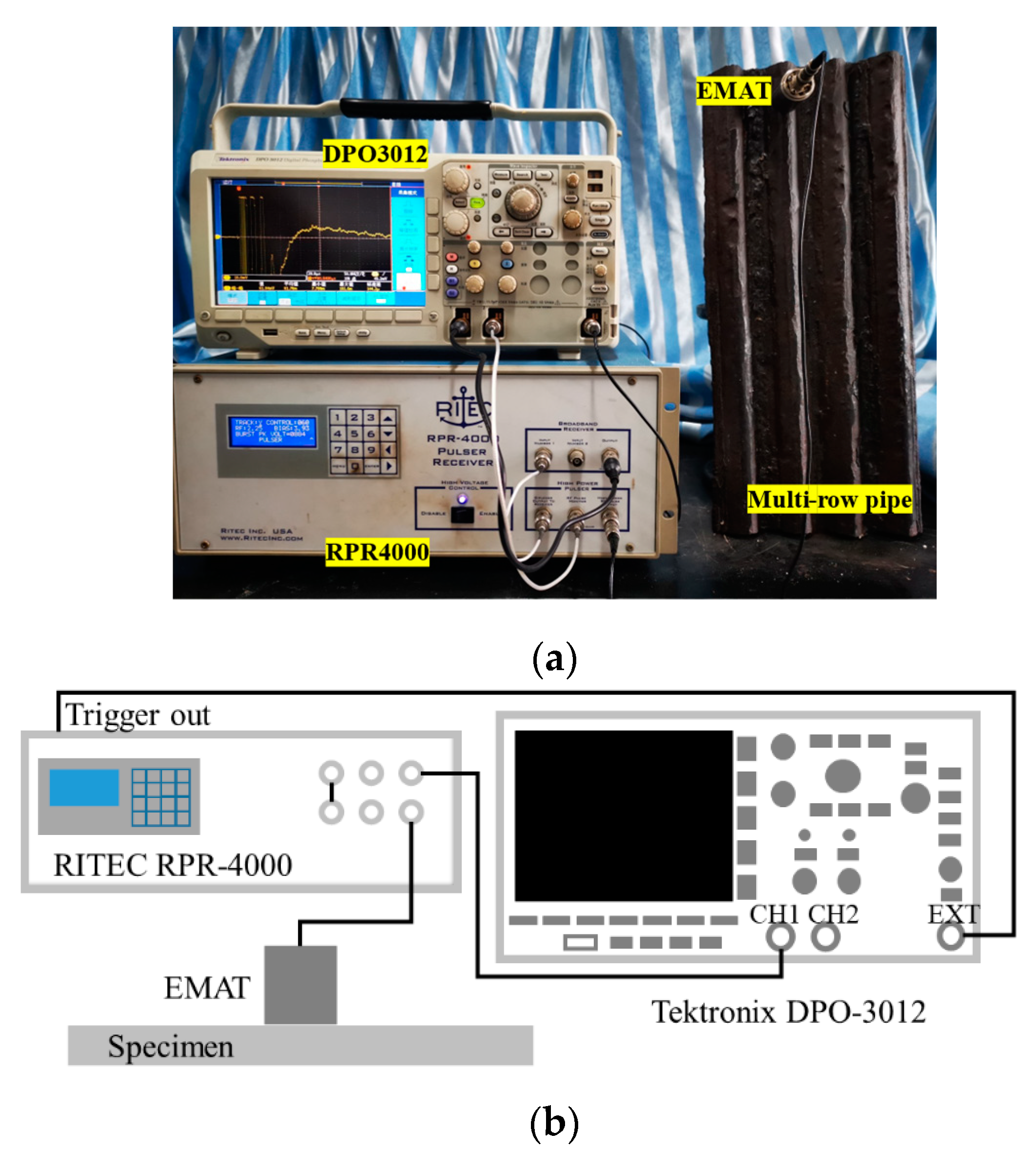
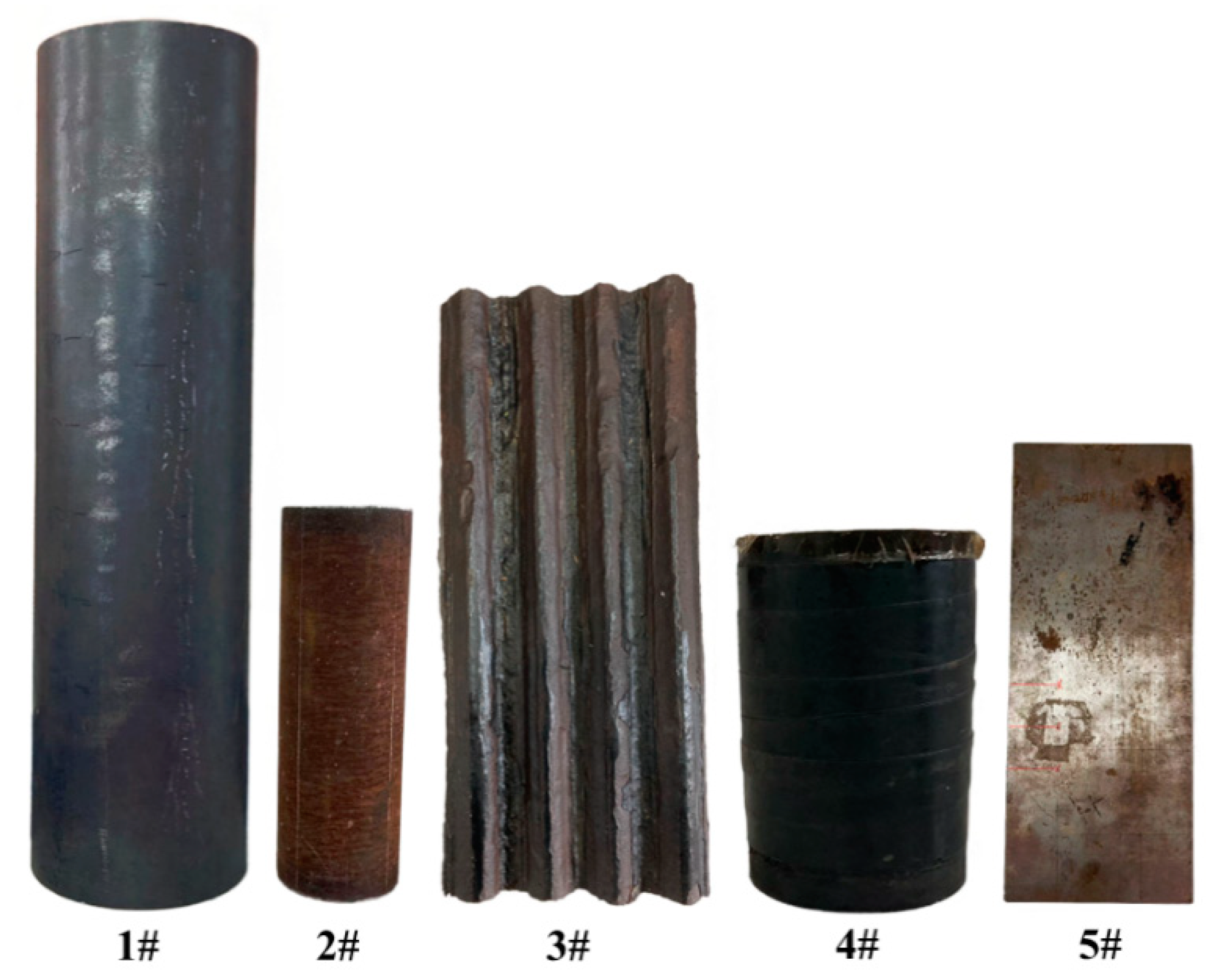


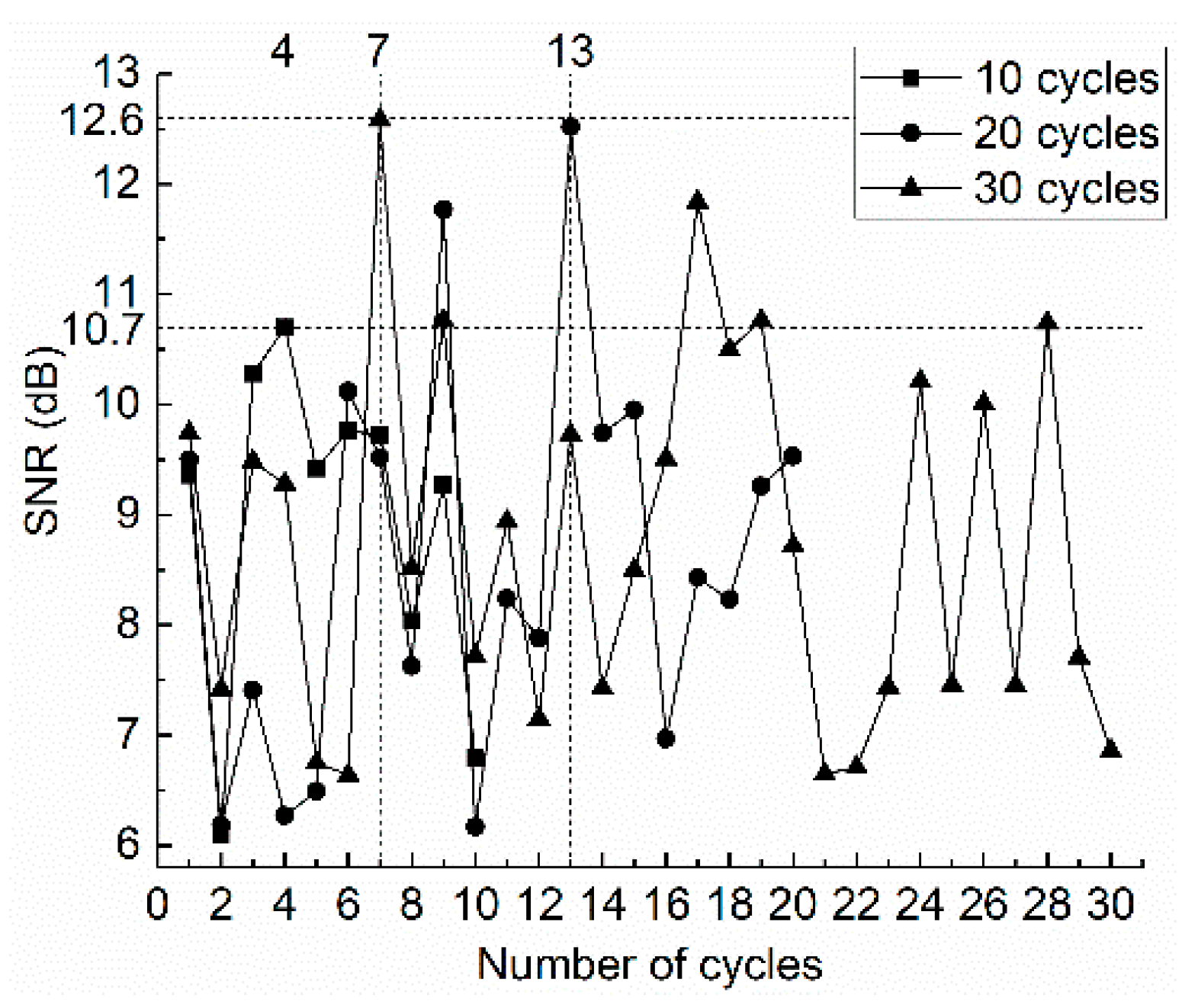
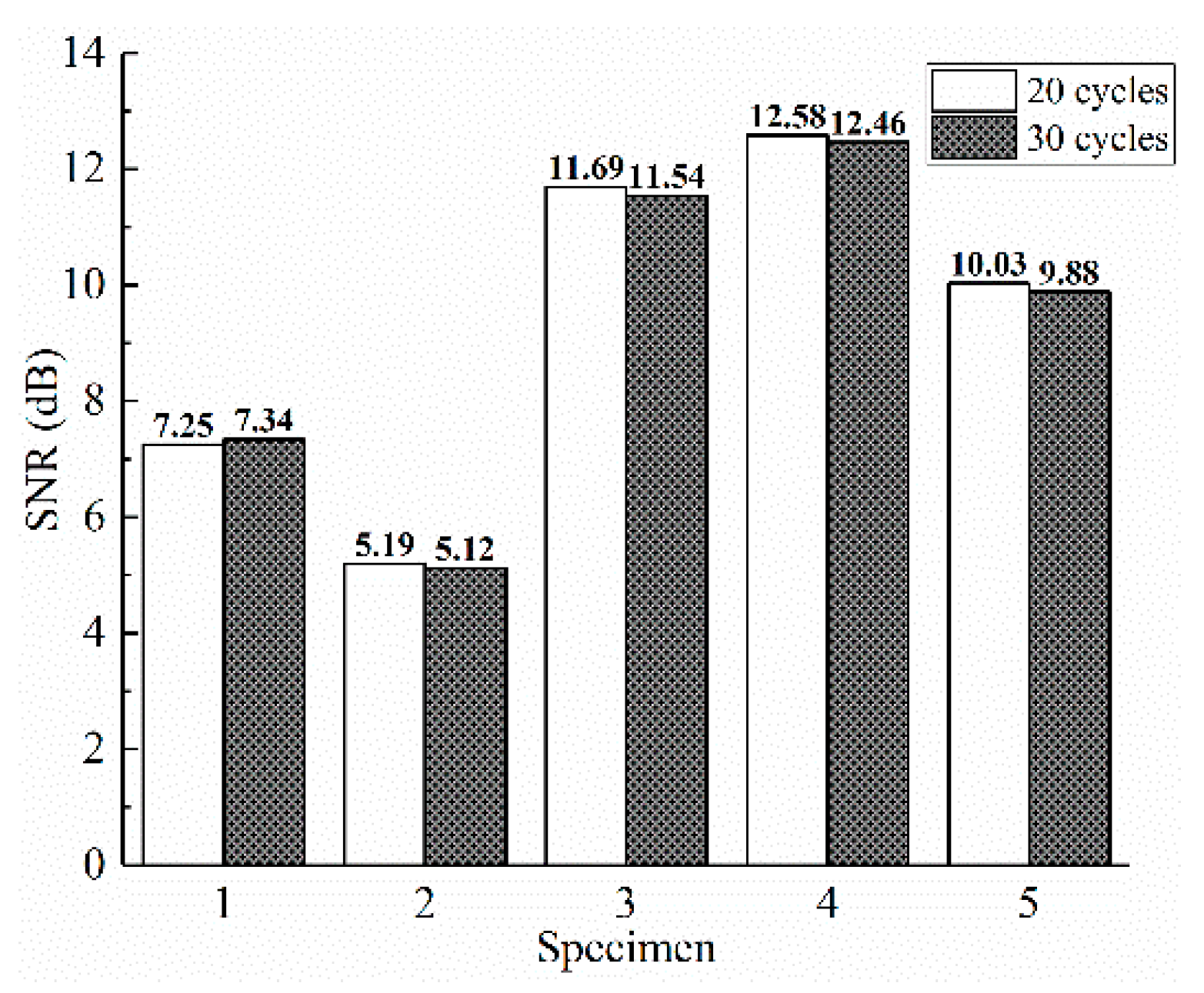

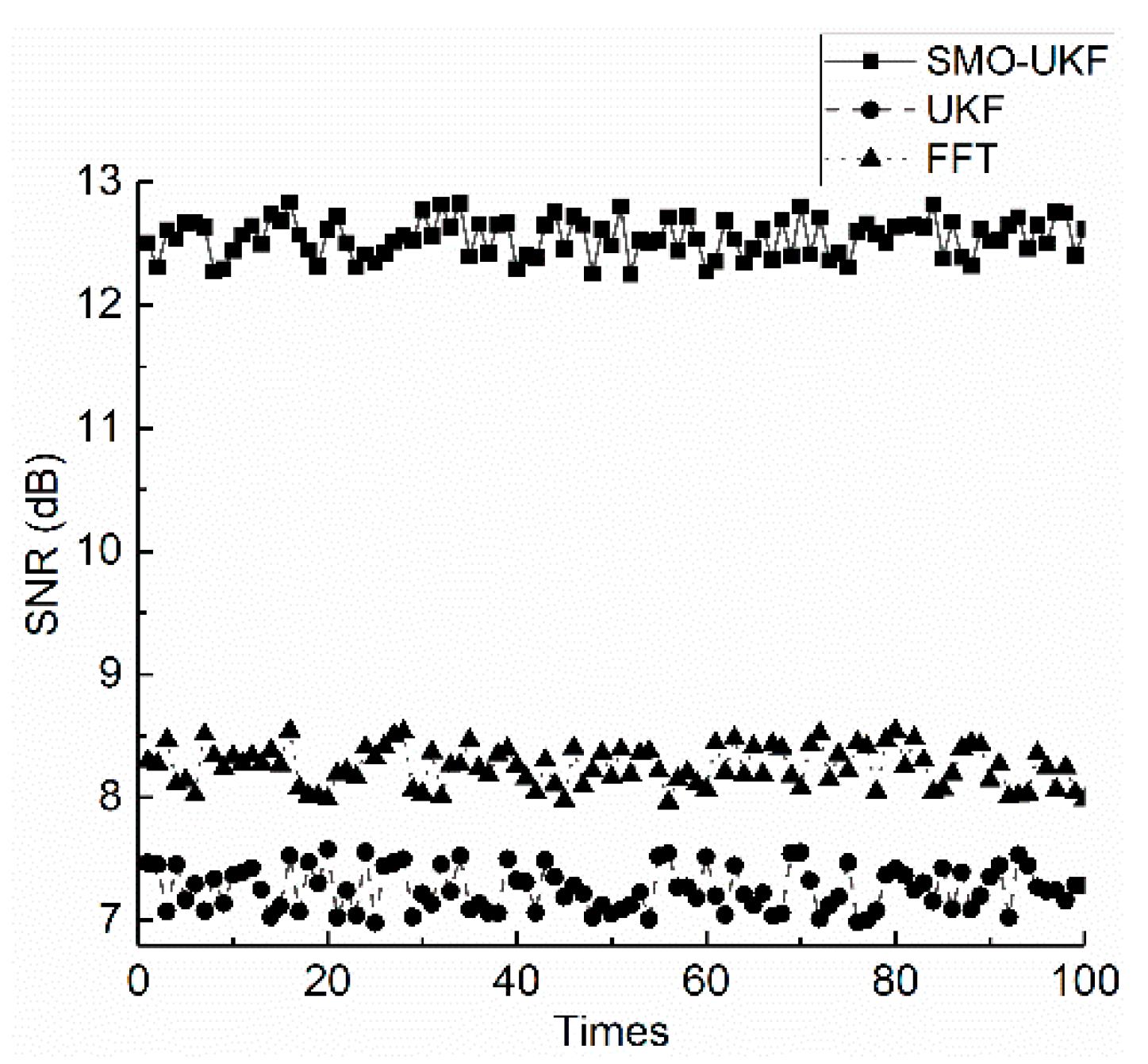
| Shape | Characteristic | Material | Outer Diameter | Thickness | |
|---|---|---|---|---|---|
| #1 | Pipe | Slightly corroded | Q235 | 400.00 | 13.00 |
| #2 | Pipe | Slightly corroded | Q235 | 50.00 | 6.35 |
| #3 | Multi-row pipe | Severe corroded | 20G | 38.00 | 10.00 |
| #4 | Pipe | with 2 mm cladding | Q235B | 400.00 | 13.00 |
| #5 | Plate | Slightly corroded | 45# | / | 10.00 |
| Vernier Caliper | Piezoelectric Probe | Original | FFT | UKF | SMO–UKF | |
|---|---|---|---|---|---|---|
| #1 | 12.94 | 12.85 (−0.70%) | / | 12.80 (−1.08%) | 12.83 (−0.69%) | 12.83 (−0.69%) |
| #2 | 6.30 | 6.24 (−0.95%) | / | 6.18 (−1.90%) | / | 6.24 (−0.95%) |
| #3 | 9.44 | 9.52 (0.85%) | 8.64 (−8.47%) | 9.34 (−1.05%) | 9.33 (−1.17%) | 9.38 (−0.63%) |
| #4 | 12.94 | / | 12.46 (−3.71%) | 13.10 (1.23%) | 13.07 (1.00%) | 12.94 (0%) |
| #5 | 10.00 | 10.03 (0.30%) | 9.76 (−2.4%) | 9.76 (−2.40%) | 9.92 (−0.08%) | 10.08 (0.08%) |
| R | Q | |
|---|---|---|
| R >> Q | 100 | 0.01 |
| R > Q | 10 | 0.1 |
| R ≈ Q | 1 | 1 |
| R < Q | 0.1 | 10 |
| R << Q | 0.01 | 100 |
| Filter Method | FFT | UKF | SMO–UKF |
|---|---|---|---|
| Processing time/s | 7.1 | 47.6 | 6.4 |
Publisher’s Note: MDPI stays neutral with regard to jurisdictional claims in published maps and institutional affiliations. |
© 2022 by the authors. Licensee MDPI, Basel, Switzerland. This article is an open access article distributed under the terms and conditions of the Creative Commons Attribution (CC BY) license (https://creativecommons.org/licenses/by/4.0/).
Share and Cite
Zhu, H.; Tu, J.; Cai, C.; Deng, Z.; Wu, Q.; Song, X. A Fast Signal-Processing Method for Electromagnetic Ultrasonic Thickness Measurement of Pipelines Based on UKF and SMO. Energies 2022, 15, 6554. https://doi.org/10.3390/en15186554
Zhu H, Tu J, Cai C, Deng Z, Wu Q, Song X. A Fast Signal-Processing Method for Electromagnetic Ultrasonic Thickness Measurement of Pipelines Based on UKF and SMO. Energies. 2022; 15(18):6554. https://doi.org/10.3390/en15186554
Chicago/Turabian StyleZhu, Huichao, Jun Tu, Chen Cai, Zhiyang Deng, Qiao Wu, and Xiaochun Song. 2022. "A Fast Signal-Processing Method for Electromagnetic Ultrasonic Thickness Measurement of Pipelines Based on UKF and SMO" Energies 15, no. 18: 6554. https://doi.org/10.3390/en15186554
APA StyleZhu, H., Tu, J., Cai, C., Deng, Z., Wu, Q., & Song, X. (2022). A Fast Signal-Processing Method for Electromagnetic Ultrasonic Thickness Measurement of Pipelines Based on UKF and SMO. Energies, 15(18), 6554. https://doi.org/10.3390/en15186554






